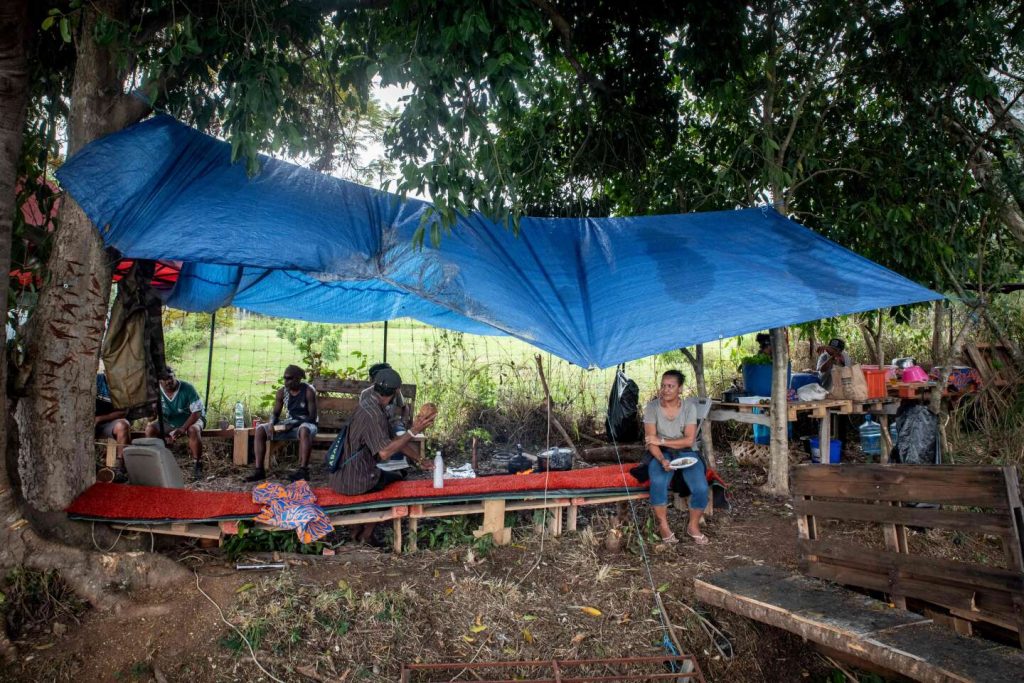People are occupying a roadblock in La Tamoa, in the municipality of Paita, New Caledonia, on May 19, 2024. Despite doubts and questions, the independence mobilization is expected to continue after a week of riots. Several sections of the Field Action Coordination Cell (CCAT) called on militants to continue their actions “peacefully and respectfully,” but conflicts persist in Nouméa. The convoy of armored vehicles and mobile gendarmes had no problem clearing the makeshift barrier of burnt cars, wire fencing, and branches, but a group of about ten independence militants who have been camping at La Tamoa since May 13 remained undeterred.
One of the members of the CCAT, Jean-Charles, emphasized the peaceful nature of their actions, following orders and maintaining their resolve. He described how they had to rebuild their barrier after the gendarmes passed through, showing their determination to continue. In their base camp set up on the side of the road, they had supplies like hot water and were cooking eels in a large iron pot over a fire. Despite the shortages affecting the capital, Jean-Charles remained optimistic, offering eggs to a visitor from Nouméa. He believed that it was time for the politicians to start discussing and finding a solution to the situation, while he continued to follow the directives of the CCAT.
Roadblocks were set up along the RT1 highway, including at Païta-Boulouparis, with different sections using social media to communicate details about locations, hours of operation, and rules. Some roadblocks were only operational during the day, while others remained open all night. The instructions were to allow ambulances and emergency vehicles to pass at all times. However, drivers were informed that they would be subject to searches at certain checkpoints, such as in Bangou, where firearms were strictly prohibited. The presence of a burning vehicle indicated the proximity of a roadblock, with young adults signaling drivers to slow down.
The scene at the roadblocks resembled a customs checkpoint, with masked and hooded young individuals conducting inspections while older adults observed. It was a routine process where drivers were asked about the presence of weapons, and if none were found, they were wished a safe journey. This controlled system aimed to maintain order and ensure the safety of everyone passing through. The efforts of the CCAT members and other militants reflected their commitment to their cause and their willingness to continue their peaceful protest until a resolution was reached. Their actions were part of a larger movement for independence in New Caledonia.
Despite the challenges and criticisms facing the CCAT and the independence movement, the members remained steadfast in their beliefs and strategies. The roadblocks served as a physical manifestation of their determination and desire for change. The situation in New Caledonia was complex and required careful navigation, with tensions running high and a need for dialogue and negotiation. The roadblocks were not only a form of protest but also a form of communication, signaling their demands and creating a visible presence in the region. As the situation continued to unfold, the actions of the independence activists would play a crucial role in shaping the future of New Caledonia and its path towards potential independence.


